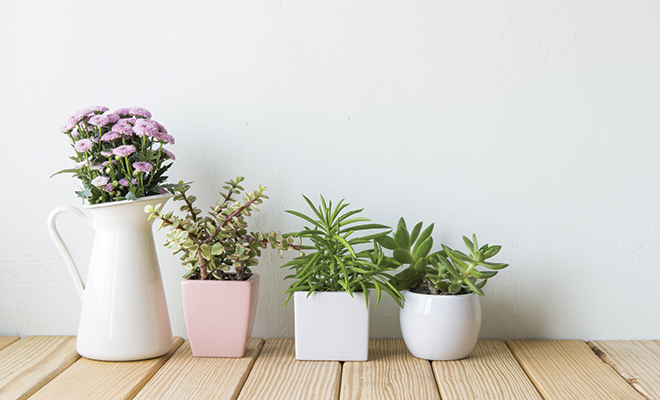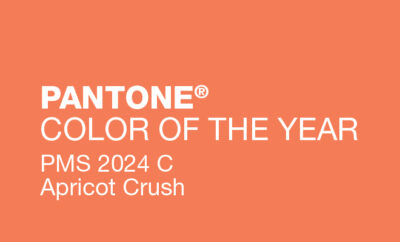
Indoor Plants Enhance Your Décor and Improve Your Health
That lush, green plant you brought indoors to save from the cold and the potted pretties dotting your tables and corners do more than give your home welcoming ambience. They can actually improve your mood, purify your air and increase oxygen levels in your bedroom, kitchen, living room and beyond.
Astudy by NASA and the Associated Landscape Contractors of America in the late ’80s proved that using houseplants to purify the air in space facilities was worthwhile. They found a number of plants that can filter out common volatile organic compounds. Those same plants can also help clean indoor air on earth, in our homes.
Their leaves, fronds and flowers absorb carbon dioxide so they can photosynthesize fresh oxygen. This helps diffuse any toxic compounds lurking from common household items such as paint and wallpaper, cleaning products, furniture, pollen, mold, bacteria or poor ventilation.
Houseplants have had residence in homes since the time of the Egyptian pharaohs. Plants in marble containers depicted in Egyptian art demonstrate that the Egyptians were among the first humans who understood the value of surrounding themselves with colorful, growing, live plants.
Taking care of a living piece of nature gives us a sense of purpose and a good feeling inside, no matter what the weather is doing outdoors. Indoor plants are a good way to teach children responsibility, by setting a watering and fertilizing schedule. Plus, people who present friends and family with plants and flowers are considered more likeable, friendly and emotionally intelligent!
What plants are best for your home? You might like the hearty, interesting-looking bamboo palm, or reed palm, which grows quickly and can be 12 feet tall. They often produce flowers and small berries and filter the formaldehyde that can be emitted from furniture.
An easy plant to grow, and great gift idea, is the peace lily. Its fragrant white flowers rid your home of indoor pollutants, gases and solvents such as ammonia. It doesn’t require much watering and thrives with indirect light.
Aloe vera plants have been popular for more than 6,000 years. In early Egypt, aloe vera was known as “the plant of immortality,” and it was used for skin conditions, to heal wounds and as a laxative. Aficionados break open its leaves and apply the gel inside to burns, sunburn and rashes. It contains amino acids, vitamins and enzymes with anti-bacterial, anti-inflammatory and soothing benefits. Plus, the plant itself looks nice and tropical.
A good reason to have a specific plant, such as the colorful garden mum, indoors is that it helps remove the VOCs of synthetic building materials, carpeting, upholstery and household cleaners. Be sure to choose a floral mum and not a garden variety, which thrives better planted outdoors.
Another low-maintenance plant that decreases pollutants in the home is the weeping fig, or ficus. It can thrive indoors during cooler months, and it may grow up to ten feet outdoors in warm weather. Placing this dramatic plant in your living room helps clean the air by filtering out pollutants and dust.
The snake plant, also known as mother-in-law’s tongue, is another plant that flourishes without much upkeep. It is best for filtering out formaldehyde, common in cleaning products, toilet paper, tissues and personal care products. Place one in your bathroom and it will enjoy the steamy, humid conditions while helping detox the air. Since they absorb carbon dioxide and release oxygen at night, they may give you a slight oxygen boost while you sleep, and will look nice on your bedside table.
Try hanging a golden pothos, or devil’s ivy, in your garage. It absorbs pollutants that are present in car exhaust. This fast-growing vine will be a beautiful bunch of green in a hanging basket; it stays green even in low light. It is poisonous, so keep it away from small children and pets.
Pretty gerbera daisies are bright, flowering plants good at removing trichloroethylene, which can be present in your dry cleaning, and benzene, present in inks. Place them in any room with lots of light.
If you want a fun plant, try the spider plant, lovingly nicknamed the airplane plant. My mother plant has been giving me little spiderettes off these plants for years and they are very hard to kill. You just plant them in a pot and voilá! They thrive in indirect sunlight and sprout the little suspended shoots with lots of rich foliage and tiny white flowers. They fight benzene, formaldehyde, carbon monoxide and xylene, a solvent used in the leather, rubber and printing industries. Plus, the spider plant is safe for pets in the house who might want to nibble.
Take a trip to your local nursery and peruse the choices. Your home will be more comfortable and your health can benefit in the process. ■
Sources: activebeat.com, bhort.bh.cornell.edu, gardenista.com, gertens.com and mnn.com.







